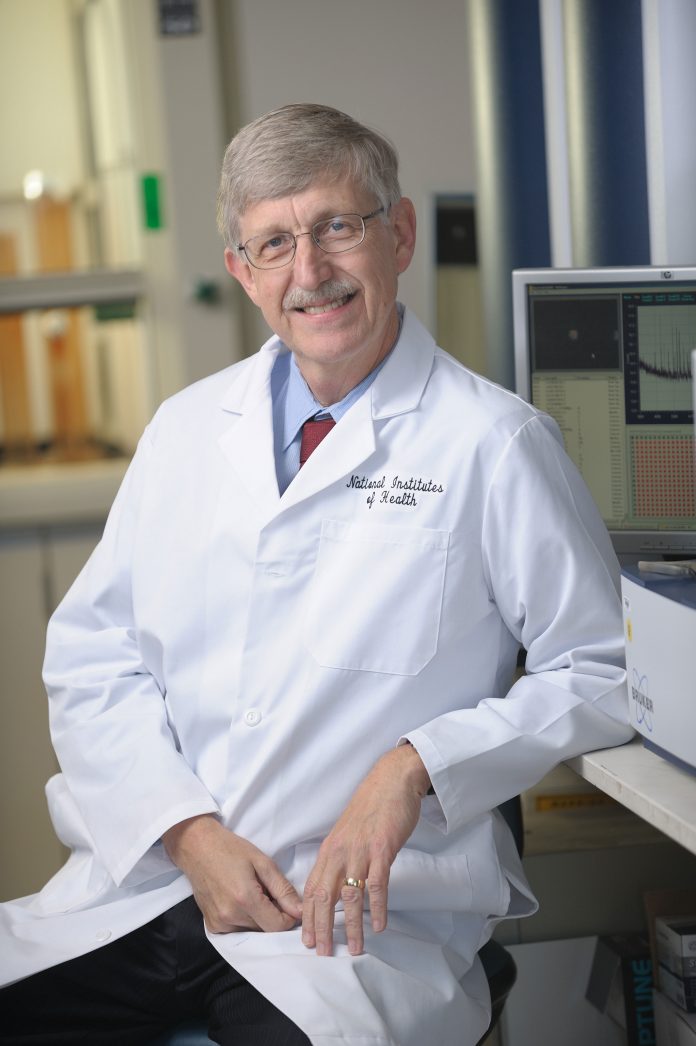
About a decade before becoming NIH Director—a position from which he will step down at year’s end—Francis S. Collins, M.D., Ph.D., was at the center of one of the hottest debates in the nascent days of genomics: How many protein-coding sequences comprise the human genome?
Collins, then leading the Human Genome Project, and other experts attending Cold Spring Harbor Laboratory’s 2000 Meeting on Genome Sequencing and Biology had impassioned debates about the project and how many total genes they anticipate gene comprise the human genome. At the suggestion of another attendee, Ewan Birney, of the European Molecular Biology Laboratory (EMBL)’s European Bioinformatics Institute (EMBL-EBI), the experts put their proverbial money where their mouths were through a sweepstakes he organized, called GeneSweep.
“At the end of my presentation, I say, I will be taking bets,” Birney, now deputy director General of EMBL and director of EMBL’s European Bioinformatics Institute (EMBL-EBI), recalled to Clinical OMICs. “Francis later on said to me, ‘You know, I was going to do something very similar,’ but there was no coordination between me and Francis. A couple of thousand people put a bet on, and the right number was nowhere near the distribution of bets.”
With experts initially estimating about 20,000 genes (still the scientific consensus, Birney said), the winning prediction (25,947) came from Lee Rowen, Ph.D., of the Institute of Systems Biology, who collected more than $1,000 and a copy of The Double Helix signed by author James D. Watson, PhD, the discoverer of DNA’s structure. Rowen was at the low end of the wagering range, which stretched from under 26,000 to more than 312,000 genes. Birney guessed 49,551; Collins, 48,011.
“He was very influential,” Birney said of Collins, who became a friend of his, “but he was very interested in scientific details. He was one of those people who were in a leadership position, but a practicing scientist as well.”
Even before joining the Human Genome Project—and eventually coming to lead the NIH—Collins and colleagues had made significant scientific contributions by identifying the gene for cystic fibrosis in 1989, the gene for neurofibromatosis a year later, and the gene for Huntington’s disease in 1993. That year, he took the helm of the National Center for Human Genome Research (NCHGR), renamed the National Human Genome Research Institute (NHGRI) four years later when it was upgraded to a research institute.
Leading the Genome Project
At the NCHGR and NHGRI, which Collins headed as director through 2008, he led the international Human Genome Project, which culminated in April 2003 with the completion of a finished sequence of the human DNA instruction book.
“I honestly do not think the Genome Project would have been successful if it were not for his stewardship of the project,” said Harry Glorikian, general partner at Scientia Ventures and a consultant specializing in life sciences, healthcare, diagnostics, healthcare IT, and the convergence of these areas.
“His unique insight and experience was a key to achieving success. I should also mention his ability to communicate to constituents on the Beltway—being able to explain the impact of the project,” added Glorikian, whose latest book The Future You: How Artificial Intelligence Can Help You Get Healthier, Stress Less, and Live Longer was published October 15 by Brick Tower Press.
The Human Genome Project, an international scientific research effort, functioned in parallel with a private genome sequencing effort led by J. Craig Venter, Ph.D., a former NIH scientist, who split from the public project to pursue shotgun sequencing, which led to the founding of Celera Genomics (since acquired by Quest Diagnostics) and now heads an eponymous research institute.
Celera’s decision to “race” the Project to spur completion of the human genome “gave a lot more impetus to the public project,” Birney observed, adding that the two efforts saw more scientific interchange than the competitive relationship between them suggested: “My understanding is, there was a point where the Wellcome Trust would have backed the Sanger Centre [now the Wellcome Trust Sanger Institute] to sequence everything and make it freely available to everybody if the U.S. public project pulled out.”
“Francis made great bridges across the world,” said Birney, who studied under Richard Durbin, Ph.D., at Sanger before leading the Project’s analysis of the human genome gene set. “There was a particular groove that the Wellcome Trust in the U.K. and NHGRI in America under Francis got into of supporting true open international data sharing on the human genome.”
That sharing in part took the form of a poster with all the genes in the human genome that had been discovered to that point. Birney first interacted with Collins during the making of that poster: “I wrote a specific piece of code and there was me, the artists that worked for NHGRI and Francis. It’s late at night arguing about what looks better or not. There was that kind of bonding experience, which you know you get from that kind of high-intensity work.”
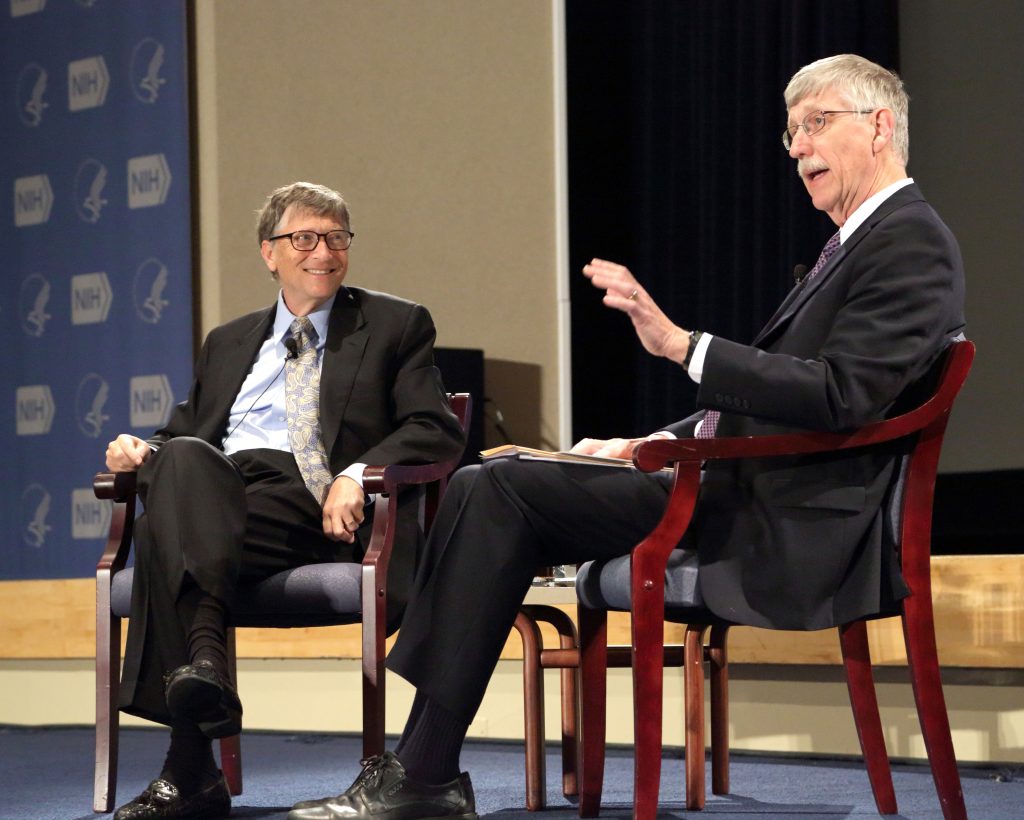
Collins also supported Birney taking on the leadership of the analysis group in the Encyclopedia of DNA Elements (ENCODE) project, which aims to define all the functional elements in the human genome, with a focus on identifying and analyzing non-coding elements.
Faith and funding
Collins became the NIH’s 16th Director in 2009 following his appointment by then-President Barack Obama. Collins became the first NIH Director to serve in more than one presidential administration—he was retained by Obama’s successors, Donald Trump, and Joe Biden.
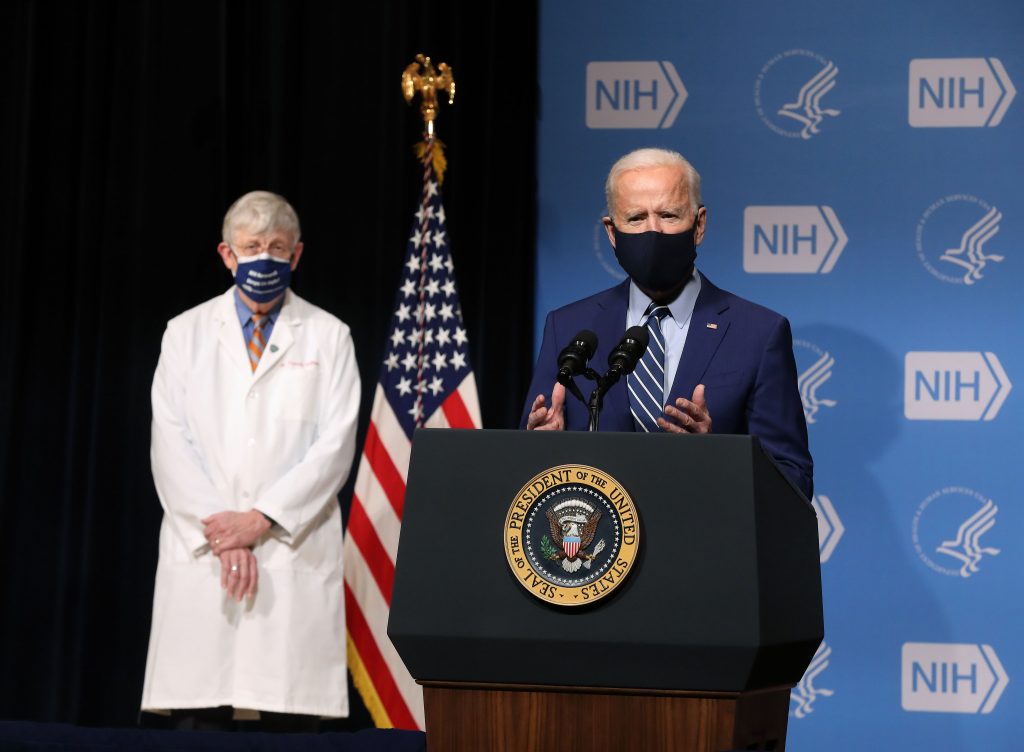
“He really could talk to Congresspeople from different sides of the aisle,” Birney said. “The fact that he wore his Christianity absolutely not on his sleeve but over his chest, I think, gave a lot of reassurance to people that were in the Republican Party.”
Collins, who embraced Christianity while a young scientist in his 20s, sought to reconcile faith and science in his book The Language of God (Simon & Schuster, 2007), in which he noted that when President Bill Clinton led the celebration of completion of the Human Genome Project in 2000, he remarked “Today, we are learning the language in which God created life, we are gaining more awe for the complexity, the beauty, and the wonder of God’s most divine and sacred gift.”
When it was his turn to speak, Collins wrote, he added: “It’s a happy day for the world. It is humbling for me, and awe-inspiring, to realize that we have caught the first glimpse of our own instruction book, previously known only to God.”
Notwithstanding Collins’ public faith, which he discussed in several books he authored, co-authored or edited, “He didn’t make it a thing that got in the way of science, and some scientists are pretty strong atheists,” Birney added.
Until COVID-19, Collins had survived Washington relatively unscathed. During his tenure, NIH’s budget increased 38%, from $30 billion in FY 2009 to $41.3 billion in FY 2021.
In recent months, however, Collins has come under fire from critics in political and research circles over the NIH’s National Institute of Allergy and Infectious Diseases (NIAID)—the institute led by Anthony S., Fauci, MD—funding “gain of function” research by the EcoHealth Alliance, which worked closely with the Wuhan Institute of Virology to transport infected bats from caves to Wuhan for study. The research has sparked fears that it may have helped lead to the pandemic.
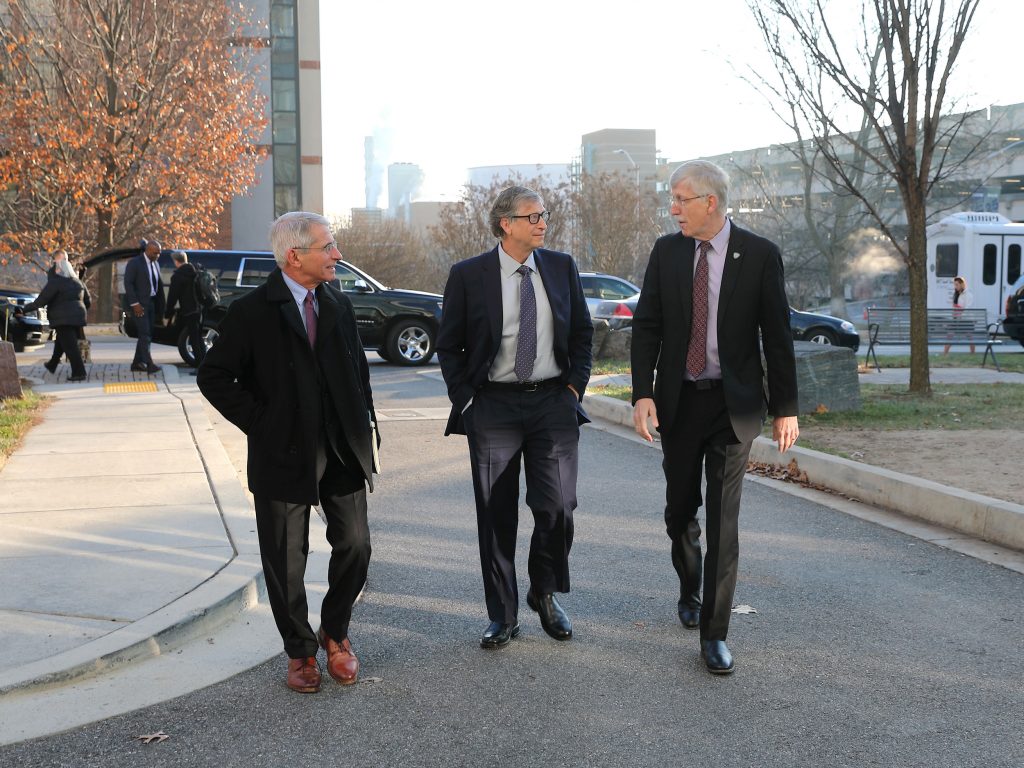
“What the heck?”
Steven Salzberg, Ph.D., Bloomberg Distinguished Professor of Biomedical Engineering, Computer Science, and Biostatistics at Johns Hopkins University, has argued for years that the NIH was wrong in 2017 when it ended a three-year pause on all research that could “confer attributes to influenza, MERS, or SARS viruses such that the virus would have enhanced pathogenicity and/or transmissibility in mammals.”
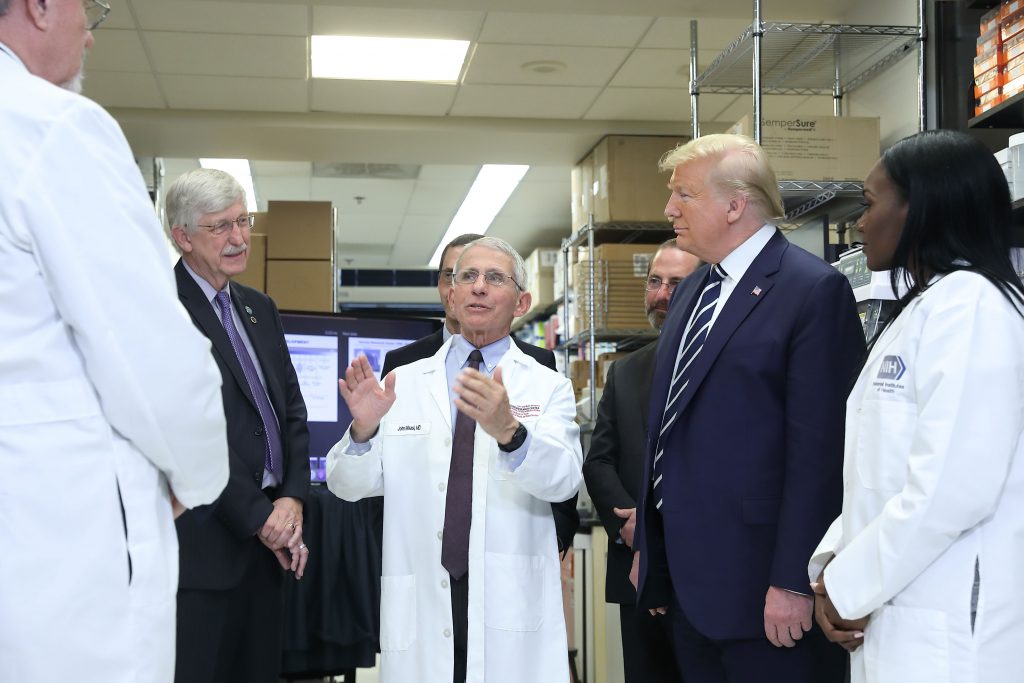
“What the heck are they doing? Why are scientists going to remote sites and collecting infected animals and then bringing them back into the middle of cities?” Salzberg wrote October 11 in Forbes. “It’s time to put a permanent end, not just a pause, to any research that makes pathogens more deadly.”
How much has NIH funding of such research under Collins cast a cloud over his tenure as director?
“I’m afraid I don’t have any further comments to add,” Salzberg told Clinical OMICs.
Collins plans to continue helming his research lab at NHGRI, which focuses on studying genomics, epigenomics and single cell biology to understand causes and means of prevention for type 2 diabetes, and also seeks to develop new genetic therapies for Hutchinson-Gilford Progeria Syndrome.
Thinking big, taking risks
During his tenure at NIH, Collins was known as one not to shy away from big ambitious projects, while also facilitating cooperation to advance science.
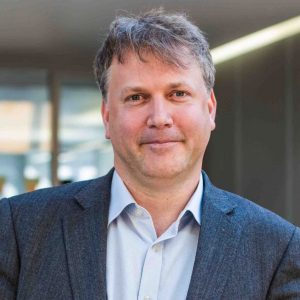
“He loved to see people come together. He loved to see debate, but then resolution rather than debate and everybody kind of walks out of the room. And he really likes to think big, which he did many, many times,” Birney said.
Examples of his leadership include overseeing the NIH’s creation of the National Center for Advancing Translational Medicine (NCATS), with an eye to accelerating translation of basic research discoveries into new drugs, and the retirement of nearly all chimpanzees it owned or supported for agency-funded research. This past year, Collins championed the proposed $6.5 billion Advanced Research Projects Agency for Health, designed to develop “high-risk, high-reward capabilities (or platforms) to drive biomedical breakthroughs—ranging from molecular to societal—that would provide transformative solutions for all patients.”
“Through his outspoken advocacy of risk-taking, he has also helped change the culture of biomedical research and destigmatized failure,” Bernard H. Munos, Ph.D., a former Eli Lilly advisor for corporate strategy who is founder and chief apostle, breakthrough innovation for the consultancy InnoThink Center for Research in Biomedical Innovation. Munos cited the increase in average annual number of new drug approvals to 47 (2019-2021 year-to-date) from 20 in the three years before Collins became NIH Director.
“There is no telling whether Dr. Collins’ accomplishments will earn him a Lasker or Nobel prize, but his legacy will live on in the many prizes and breakthroughs that he has inspired. And that’s an even greater reward,” added Munos, a Senior Fellow with FasterCures, a Center of the Milken Institute.
Collins also led NIH in launching the All of Us Research Program, designed to glean health and wellness data from 1 million or more Americans, but has yet to reach that enrollment goal.
“He has been a champion of precision medicine, building upon the success of the HGP,” Glorikian said. “I hope that someday people will realize the impact of his leadership in this area, and the profound impact it has had on human health and the advancement of science.”
Collins has shown an additional skill: During the second surge of COVID19 cases late last year, The Children’s Inn at NIH, a nonprofit that houses kids who participate in agency clinical studies, released a video of Collins strumming his acoustic guitar, singing: “Somewhere Past the Pandemic” to the tune of “Somewhere Over the Rainbow.”
“I had the pleasure of having lunch with him once at a friend’s house down in Washington, D.C., and he brought his guitar and played for us,” Glorikian reminisced. “I told my wife: ‘Remember this. It’s not every day the NIH Director plays a guitar for your enjoyment.’ It showed a side of him most people don’t necessarily see.”













